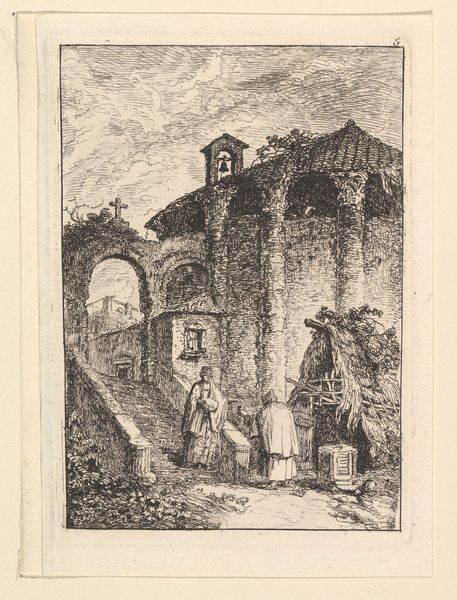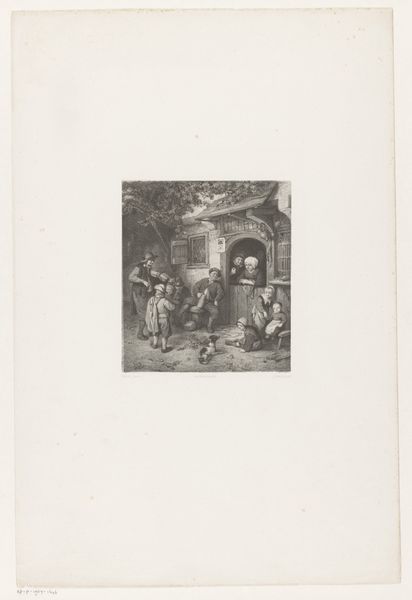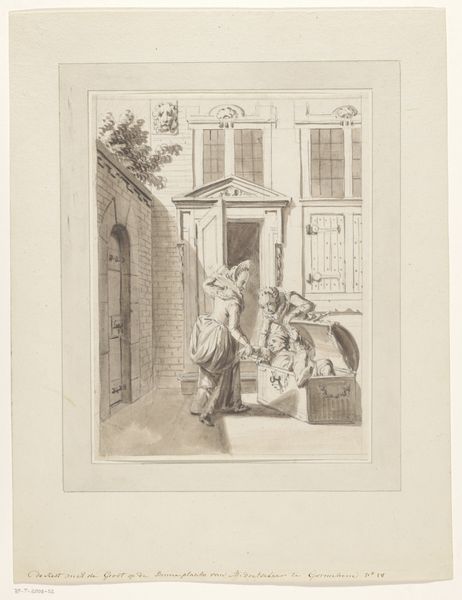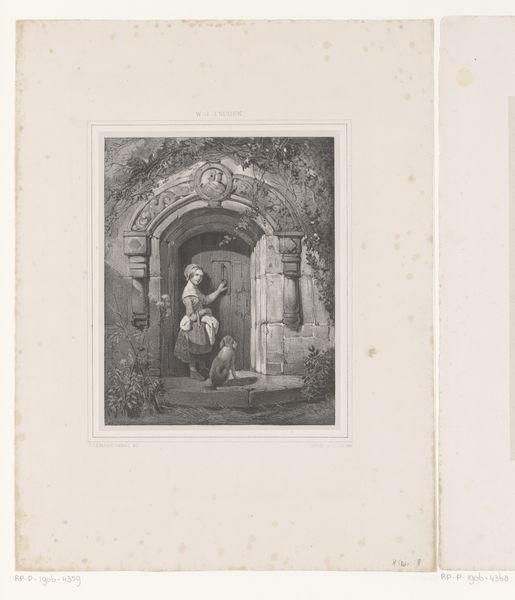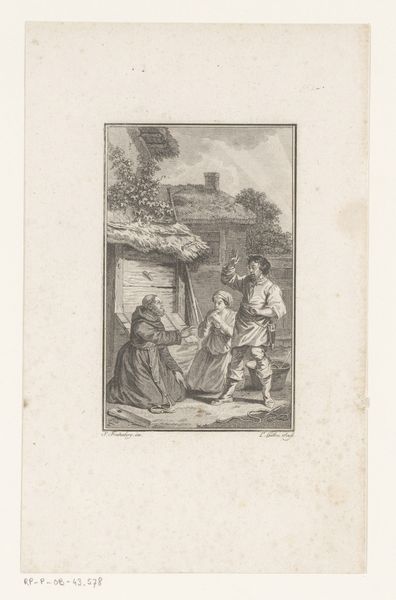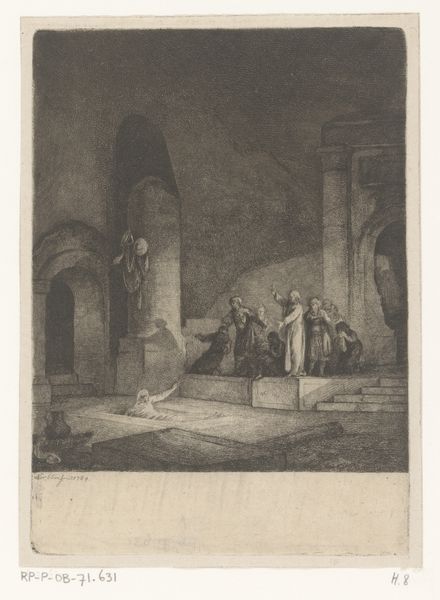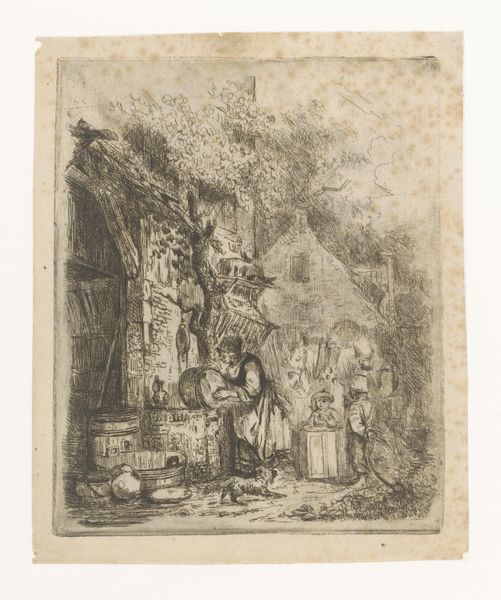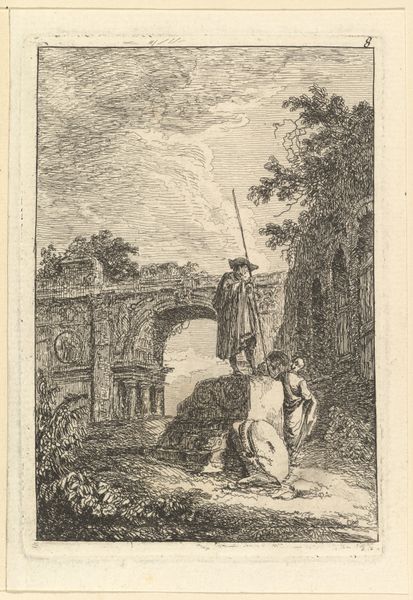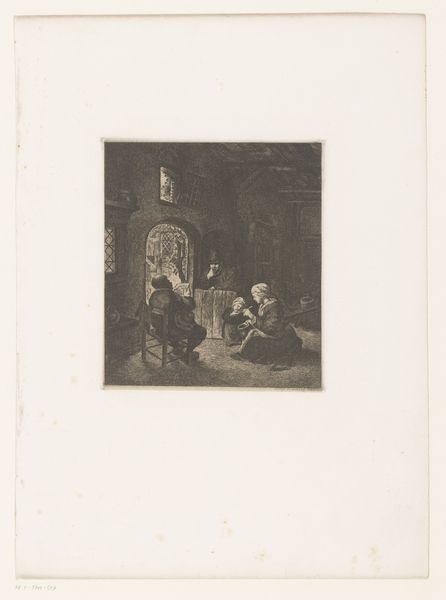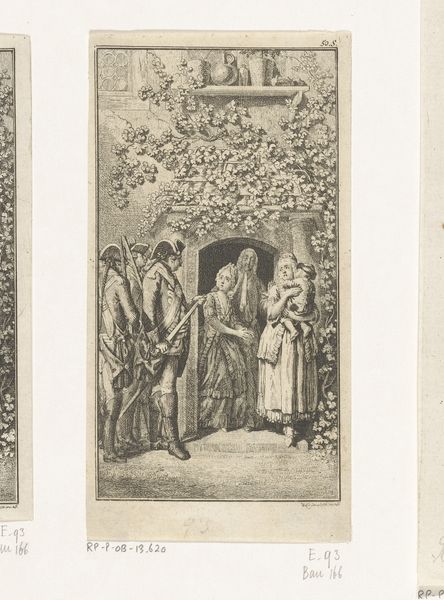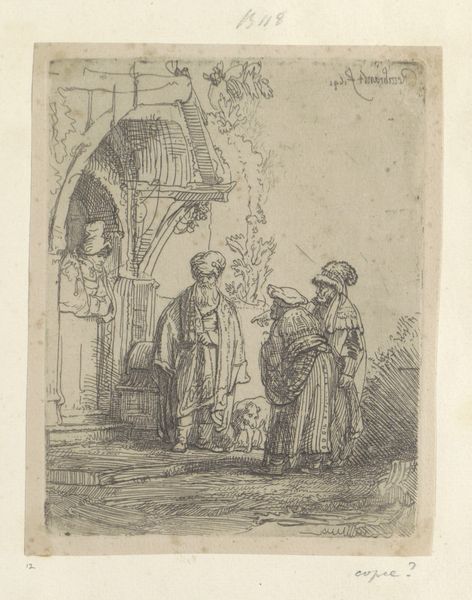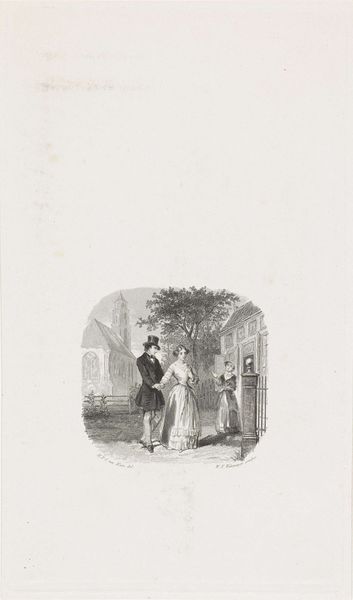
drawing, print, etching, paper
#
drawing
#
narrative-art
# print
#
etching
#
landscape
#
figuration
#
paper
#
romanticism
#
line
#
genre-painting
Dimensions: height 114 mm, width 81 mm
Copyright: Rijks Museum: Open Domain
Curator: This etching by Jean Théodore Joseph Linnig, completed in 1842, is titled "Three Children at a Farm Door." Editor: It’s remarkably subdued. The tonal range is so tight; it nearly approaches monochrome and it certainly evokes a bygone era. Curator: Yes, Linnig primarily utilizes line work here, cross-hatching in the darker areas, to construct volume and dimension. The architectural structure, specifically the placement of the arched doorway, creates a defined, geometric structure upon which the asymmetrical blooming foliage then contrasts to build pictorial tension. Editor: And that tension certainly cues the central narrative. I can't help but feel the weight of their unseen future here, especially within the context of rural poverty in 19th-century Europe. The older child bearing a bundle of twigs…it underscores themes of labor and the precarity of childhood. Curator: I concur to a degree. The subject and composition recall earlier genre scenes; but his conscious manipulation of tonal relationships separates Linnig from his peers. Consider, for instance, how Linnig has manipulated the depth and contrast to flatten certain planes, almost to render the composition as tapestry or low-relief sculpture. The artist consciously challenges illusionistic pictorial space. Editor: Right, but to divorce this artistic choice from the sociopolitical milieu in which the image was produced feels negligent. Class dynamics—the laboring child, the lack of clear father figure—are deliberately brought to the foreground, making them unavoidable. It isn’t merely formal play. The choice of what to depict in addition to how is essential. Curator: Perhaps. However, the artwork also showcases Linnig's mastery of detail, from the individual bricks to the delicate flowers blooming above the door. The textural variety throughout certainly highlights his considerable technical prowess in the etching process. Editor: For me, it speaks of lived experience and how it impacted social consciousness. By choosing such subjects, Linnig's artwork allows the opportunity to open the door for more nuanced understandings of both his time and our own. Curator: Thank you, your observations open further interpretation of this visually stunning artwork.
Comments
No comments
Be the first to comment and join the conversation on the ultimate creative platform.
